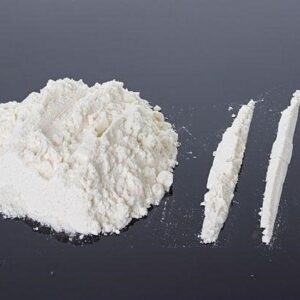Bifenazate Market Detailed Analysis of Current Trends and Future Industry Growth Figures till 2030Posted by Pearl Smith on May 22nd, 2023  Bifenazate is an acaricide, which means it is a type of pesticide used to control mites and ticks. It is often used in agricultural settings to protect crops from these pests. Bifenazate belongs to the chemical class known as formamidines. Here are some key points about bifenazate: Mode of action: Bifenazate acts by inhibiting the respiration of mites and ticks, leading to their death. It disrupts the electron transport system in the mitochondria of these pests. Target pests: Bifenazate is primarily effective against spider mites (Tetranychidae family), which are common pests in many crops, including fruits, vegetables, and ornamental plants. It also provides some control against certain species of ticks. Application: Bifenazate is typically applied as a spray or a foliar treatment. It can be used on a variety of crops, such as grapes, citrus fruits, strawberries, apples, and ornamental plants. The specific application rates and timing may vary depending on the target pest and crop being treated. Environmental considerations: Bifenazate is considered to have low toxicity to mammals and birds. However, it can be toxic to aquatic organisms and honeybees, so proper precautions should be taken to prevent contamination of water sources and minimize exposure to non-target organisms. Regulation: The use of bifenazate is regulated by government authorities in different countries. Regulations may include restrictions on application rates, pre-harvest intervals, and guidelines for handling and storage. It is important for users to follow the specific regulations and label instructions provided for the product being used in their region. As of my knowledge cutoff in September 2021, the bifenazate market was experiencing moderate growth. The increasing demand for bifenazate was primarily driven by the need for effective control of spider mites and ticks in agricultural crops. Spider mites, in particular, are known to cause significant damage to a wide range of crops, and bifenazate has been proven to be an effective solution for their control. Factors contributing to the growth of the bifenazate market include: Rising agricultural activities: The growing global population and increasing food demand have led to expanded agricultural activities. As a result, there is a greater need for crop protection products, including acaricides like bifenazate, to ensure high-quality yields and prevent yield losses caused by pest infestations. Increasing awareness about pest management: Farmers and growers are becoming more aware of the importance of pest management practices to optimize crop production. Bifenazate's effectiveness against spider mites and ticks, coupled with its relatively low toxicity to mammals, has made it a preferred choice among many farmers. Shift towards sustainable agriculture: There is a growing emphasis on sustainable agricultural practices, which includes minimizing the use of harmful pesticides. Bifenazate is considered to have a favorable environmental profile compared to some other acaricides, which aligns with the increasing demand for sustainable pest management solutions. Some of the major players operating in the global bifenazate market include, Chemtura Corporation, The Dow Chemical Company, Olympic Horticultural Products, Inc., Certis USA L.L.C., and BASF Corporation. Here are some key points regarding the demand for bifenazate: Crop protection: Bifenazate is widely used in agricultural settings to protect a variety of crops, including fruits, vegetables, and ornamental plants, from spider mite infestations. The demand for bifenazate is closely linked to the occurrence of spider mite outbreaks and the desire to prevent crop damage and yield losses. Spider mite prevalence: Spider mites are a common pest in many regions worldwide and can cause significant economic damage to crops if left uncontrolled. The demand for bifenazate increases during periods of high spider mite activity or outbreaks, as farmers and growers seek effective solutions to manage these pests. Efficacy and performance: Bifenazate has demonstrated strong efficacy against spider mites, making it a sought-after acaricide in the market. Its mode of action targets the respiratory system of mites, leading to their control and reduction in population. Sustainable pest management: The demand for bifenazate is also influenced by the increasing emphasis on sustainable and integrated pest management practices. Bifenazate is considered to have a favorable environmental profile compared to some other acaricides, which aligns with the demand for sustainable pest control solutions. Bifenazate has a wide range of applications in the market, primarily in the agricultural sector. It is used as an acaricide to control spider mites and ticks on various crops. Here are the main applications of bifenazate: Crop protection: Bifenazate is extensively used to protect a variety of crops from spider mite infestations. It is effective against various species of spider mites, including the two-spotted spider mite (Tetranychus urticae), which is a common and destructive pest in many crops. Fruits and vegetables: Bifenazate is applied on a range of fruits and vegetables, including but not limited to grapes, citrus fruits, strawberries, apples, pears, tomatoes, cucumbers, peppers, and eggplants. These crops are susceptible to spider mite infestations, and bifenazate provides effective control to prevent damage and yield losses. Ornamental plants: Bifenazate is also used to protect ornamental plants, such as roses, carnations, chrysanthemums, and various flowering and foliage plants, from spider mites. Ornamental plants in greenhouses, nurseries, and gardens can be vulnerable to spider mite infestations, and bifenazate helps to manage these pests. Agricultural systems: Bifenazate is applied using different methods depending on the crop and pest management practices. It is commonly used as a spray or a foliar treatment, where it is applied directly to the foliage of the plants. The specific application rates, timing, and frequency may vary depending on the crop, target pest, and local regulations. It's important to note that the application of bifenazate should be done following the instructions provided on the product label and in accordance with local regulations. These guidelines help ensure effective and safe use of the pesticide. The bifenazate market offers several benefits to farmers, growers, and the agricultural industry as a whole. Here are some of the key benefits associated with the use of bifenazate: Effective pest control: Bifenazate is known for its efficacy against spider mites and certain species of ticks. Spider mites are notorious pests that can cause significant damage to crops by feeding on plant tissues and sucking out the sap. Bifenazate provides effective control of these pests, helping to protect crops and prevent yield losses. Broad crop compatibility: Bifenazate is compatible with a wide range of crops, including fruits, vegetables, and ornamental plants. This versatility makes it a valuable tool for farmers and growers across different agricultural sectors. It can be used on various crops susceptible to spider mite infestations, providing reliable pest management options. Reduced resistance development: Bifenazate has shown relatively low cross-resistance with other acaricides, making it useful for managing spider mites that have developed resistance to other chemicals. Rotating or integrating bifenazate with other acaricides can help prevent the buildup of resistance in pest populations, ensuring long-term effectiveness. Low mammalian toxicity: Bifenazate has been evaluated for its toxicological properties, and it is considered to have low toxicity to mammals. This characteristic is beneficial for both the applicators and consumers of agricultural products. However, it is still important to follow safety guidelines and use proper protective measures during application to minimize exposure. Favorable environmental profile: Bifenazate has a relatively low impact on the environment compared to some other acaricides. It has a short half-life and breaks down into non-toxic metabolites. When used as directed, bifenazate poses minimal risk to non-target organisms, including beneficial insects, birds, and aquatic life. Integrated pest management (IPM) compatibility: Bifenazate fits well within integrated pest management strategies, which aim to minimize pesticide use and rely on a combination of cultural, biological, and chemical control methods. Its selectivity and low toxicity to beneficial insects make it compatible with IPM programs, allowing for the conservation of natural enemies and promoting sustainable pest management practices. It's important to note that while bifenazate offers these benefits, responsible and judicious use of any pesticide is crucial. Following label instructions, adhering to local regulations, and considering factors such as resistance management and environmental impact are necessary to ensure the effective and sustainable use of bifenazate in the market. Like it? Share it!More by this author |


